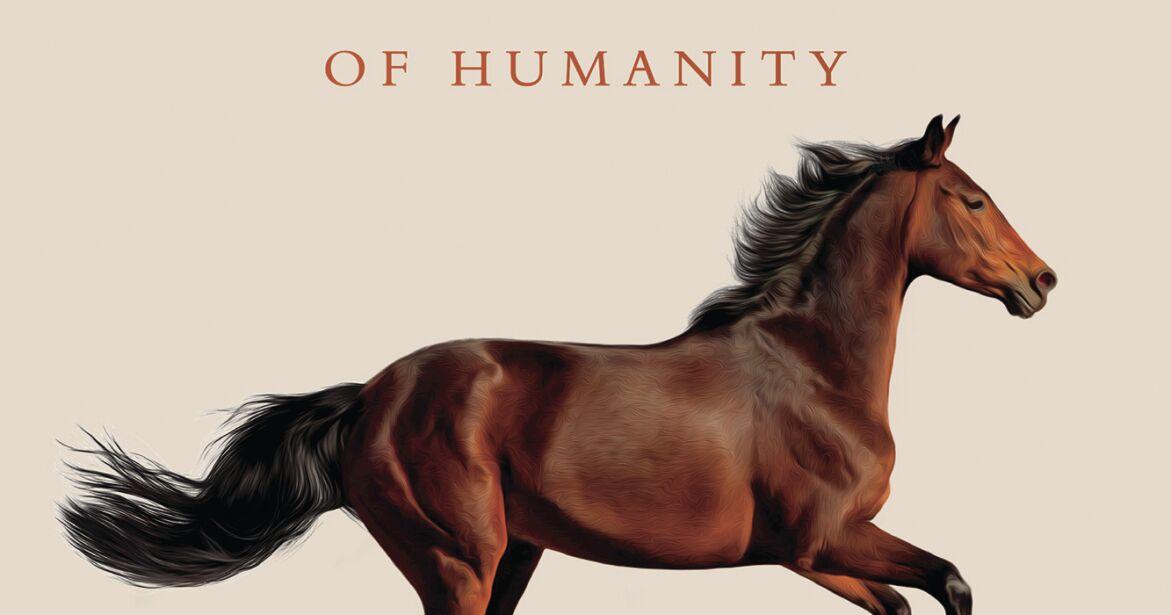
From childhood, Timothy Winegard has had a persistent question about horses.
How do horses get so big, muscular and powerful by basically eating just grass? “I couldn’t figure this out as a kid,” Winegard said.
As an adult, he finally was able to answer that question, learning about what amounts to a horse physiological superpower while he was researching how the horse attained “superhero, sidekick status to humanity” for thousands of years.
“The Horse: A Galloping History of Humanity” by Winegard will be released Tuesday, July 30, by Dutton, an imprint of Penguin Random House.
“I think it’s an interesting way to look at history from a non-human lens,” said Winegard, who is an associate history professor at Colorado Mesa University and the coach of the men’s hockey team.
“The history of humanity is the history of the horse as well. You can’t have one without the other,” he said.
Consider farming, warfare, migration, colonization, travel and more and you’ll find that “the horse has really been the invisible hand driving human history,” he said.
We’ve overlooked the horse and its contributions to our shared history to some degree because it has always been there, he said.
It has been only in the past 100 years that humanity’s relationship with the horse has changed, thanks to the internal combustion engine, he said.
In fact, while some of those engines worked, taking Winegard and his hockey team to games in the past several years, Winegard read and researched for his book.
The horse has been written about in many different ways and there was a mountain of research to get through, he said.
He noted that the research made “The Horse” more of a struggle than his previous books, which include the 2019 bestseller “The Mosquito: A Human History of Our Deadliest Predator.”
For about three years, Winegard immersing himself in horse history with all kinds of distracting rabbit holes: The oldest known pair of pants made for horsemen date to 1300 B.C. and were found in northwest China. And “personal cannabis kits” have been found in the burial sites of fifth century nomadic horse groups. “That’s crazy. Gives a whole new meaning to the term ‘drug mule,’ ” Winegard said.
“I love researching and the writing process because I learn so much,” he said.
He gets to “connect dots that have never been connected before,” he said. “It’s finding Blackbeard’s treasure in a way.”
“I’m a giant nerd, a giant history nerd,” he said, then admitted that the editing process for “The Horse” also had challenges.
He cut at least 42,000 words from his original draft and editors convinced him to let go of two chapters related to Alexander the Great. “Nobody is going to buy a book that’s 6 feet tall,” he said.
Even with the edits, “The Horse” will arrive at bookstores with 461 pages from the beginning of its introduction to end of the last chapter, with even more pages for the bibliography, notes and index.
“At the end of the day, I do my best and I love what I do. I hope people enjoy (‘The Horse’). And more importantly I hope people learn from it,” Winegard said.
FIND ‘THE HORSE’
A book launch event for Timothy Winegard and “The Horse: A Galloping History of Humanity” will be from 5:30–7 p.m. Tuesday, July 30, in the Community Room of Mesa County Libraries’ Central Library, 443 N. Sixth St. The event will be held in partnership with Out West Books. Additional local events for Winegard: ■ There will be a book signing from 2–4 p.m. Aug. 17 at Barnes & Noble Booksellers, 2451 Patterson Road. ■ An interview with Turn the Page with Colorado Matters/Colorado Public Radio with a live audience will be at 6:30 p.m. Sept. 11 in the Love Recital Hall of CMU’S Moss Performing Arts Center, 1221 N. 12th St. ■ Knowledge on Tap – GJ featuring Winegard and “The Horse” will be from 6–8 p.m. Oct. 3, at Base Camp Beer Works, 2575 U.S. Highway 6&50.






